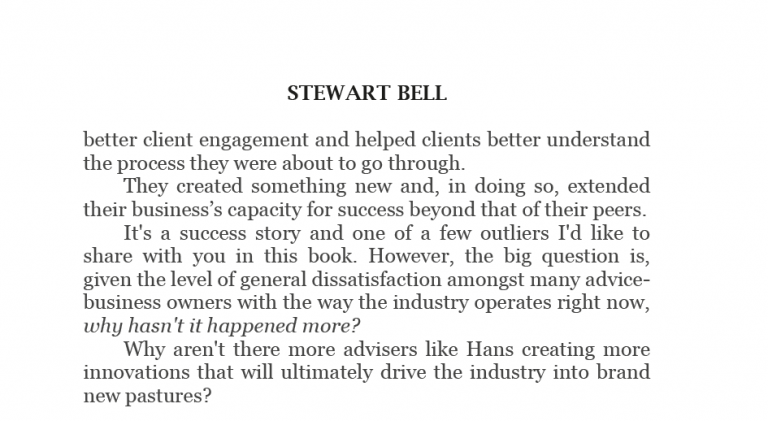When I wrote my first book finnovation back in 2015, one of the very first questions I asked in the book was around the dearth of technology innovation when it came to advice.
Specifically, I put the question out there…

What a difference seven years makes.
It’s almost like the situation has been reversed. There are so many different advice tech, fintech or whatever you want to call it tools which are all designed to help you improve your practice.
At the same time, there’s one truth we all kinda know to be true…
The growing number of tools hasn’t exactly coincided an exponential growth in adviser efficiency, slashing of administration workloads or any number of other benefits we might have expected.
Some of that is due to factors completely unrelated to technology, but there’s also the case to be forward that sometimes, in many cases, in fact, the tech simply wasn’t what was needed.
Square peg in no hole.
I wanted to share with you two questions worth considering before you make a decision to add another technology solution into your practice.
Question 1: Is this going to require more work to achieve the same outcome?
Sounds weird, right? Unfortunately, there are a number of tools out there that actually add complexity to the advice process.
Let’s pick one area – your new client engagement process.
For me, the core objective of the whole first appointment process is to deliver a quality experience whilst minimising the amount of work required to achieve client engagement. This is the most efficient method. Great experience where you don’t start solving the problems until the client say, “I’m in”.
Some of the best advisers I know are those who’ve mastered the ability to meet with a potential client with no pre information and have a really powerful, insightful and inspiring conversation which, once delivered provides the potential client complete clarity over what they need to do and commitment to start the process of getting advice
One and half hours to a yes or a no. No tech required.
Much of the software designed to assist with this takes a different tack, built with the intention of trying to provide solutions and map things out in a way to convert clients.
Now here’s the thing. If you are someone who genuinely struggles to convert clients, get the heart of what they really want, talk about the transformation, then maybe this is the right thing for you.
However, if you are good at having conversations with clients, good at helping them define their goals, good at making a connection and, most importantly, you’re good at helping diagnose their issues and show them a way forward, then is adding another few hours of work to that process really the best option?
Question 2: Is it actually going to help me get a result?
Let’s go back to our first appointment tool.
Let’s say you feel like it can help you do things better. What exactly is “better”? What’s the purpose?
Are you trying to reduce fee sensitivity? Get engagement sooner? Reduce the time it takes to get clients to give you their info? Are you wanting to increase conversion rates?
Or is it some tangible definition that just makes you feel better?
Sometimes people adopt software tools because they look good, or they like the idea of it, or they think it’ll give them something they’re missing, not because they’re actually solving a problem.
So, before you go and spend hundreds of bucks a month on something it may be worth asking, “What’s the itch I’m trying to scratch? What’s the problem I’m trying to solve and is it a problem that actually needs solving”
You could save yourself more than just money.
Related: A Simple Explanation of Digital Marketing for Advice

